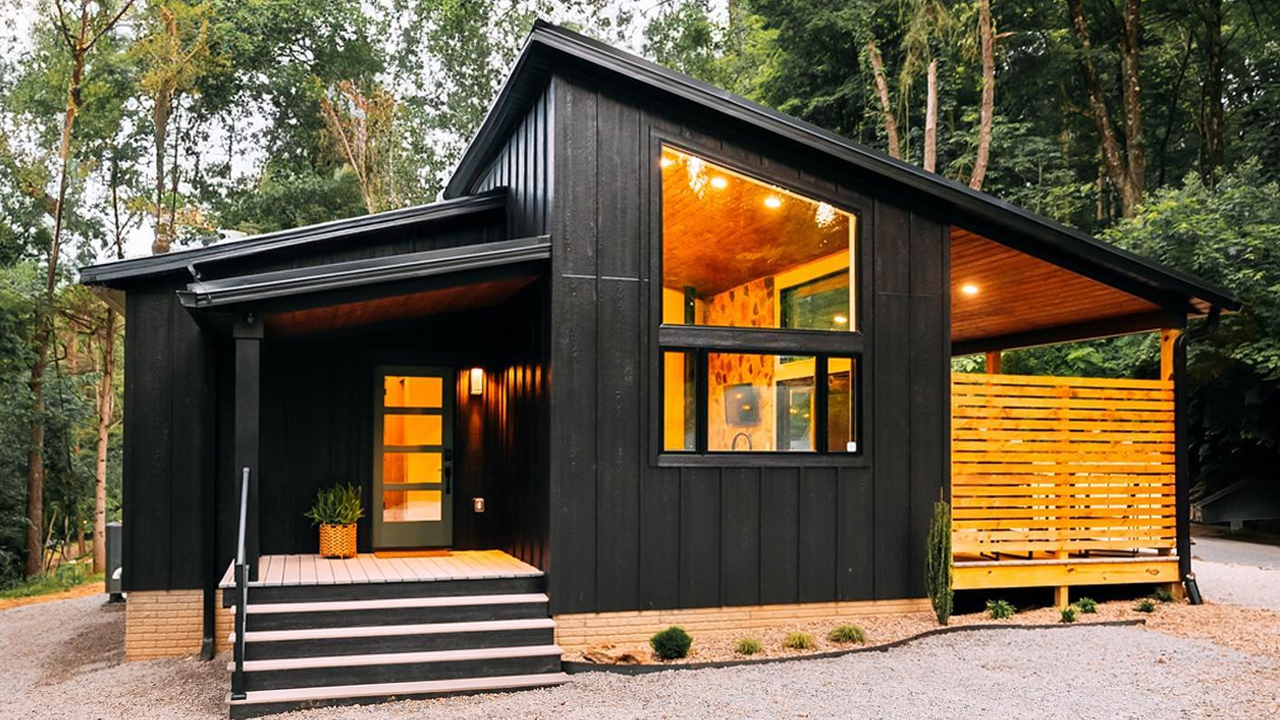The surge in tiny house living has introduced a transformative approach to modern living, emphasizing sustainability and eco-friendliness.
This lifestyle shift is not just about downsizing physical space but also about reducing environmental footprints and embracing a more sustainable lifestyle.
In this comprehensive blog post, we’ll delve into the environmental benefits of living, showcasing why this movement is more than a trend—it’s a pathway to a more sustainable and eco-friendly future.
Reduced Resource Consumption
The construction needs less material than typical buildings, therefore the extraction, processing, and transportation of building materials directly lessen the environmental impact of the building.
Reduced space also deters hoarding and overindulgence, which reduces trash production. Residents help reduce landfill trash, a major global environmental concern, by living a minimalist lifestyle.
Due to their reduced size, tiny houses naturally consume less energy for heating, cooling, and lighting. Many tiny homes are also built with energy-efficient appliances and systems, further diminishing their carbon footprint.
Additionally, the compactness of these homes encourages the installation of water-saving fixtures, leading to considerable reductions in water use and wastewater production. This efficient use of resources not only supports environmental sustainability but also translates into financial savings for homeowners.
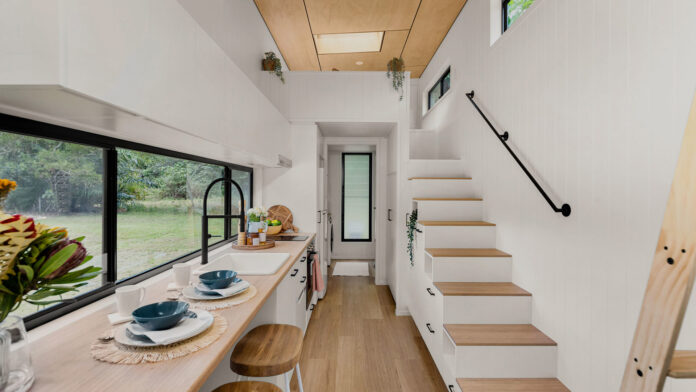
Enhanced Land Use and Biodiversity
Due to their smaller footprints than traditional residences, they have the potential to significantly reduce both land usage and deforestation. In both urban and rural settings, where there is a shortage of space, this reduced land use is critical to maintaining natural landscapes. They help to preserve undeveloped land by taking up less space, which supports biodiversity and ecosystem health.
The small footprint often leaves more room for green spaces, whether in urban or rural settings. These green areas are vital for the local ecosystem, providing habitats for wildlife and contributing to air and water purification.
By integrating them into the landscape with minimal disruption, there’s an opportunity to enhance ecological networks and promote biodiversity even within densely populated areas.
Fostering Community and Lifestyle Changes
Communities often emerge with a shared commitment to sustainable living, creating tight-knit groups of individuals who support each other in reducing their environmental footprints. These communities encourage the sharing of resources, collaborative gardening, and other eco-friendly practices.
Living in a tiny house naturally leads to a reduction in consumption and a simpler, more sustainable lifestyle. Residents become more mindful of their purchases, energy use, and waste, leading to a more conscious approach to living.
This shift in mindset extends beyond the confines of the tiny home, influencing broader lifestyle choices and promoting a culture of sustainability. By embodying the principles of minimalism and eco-consciousness, this living catalyzes broader societal change toward sustainability.
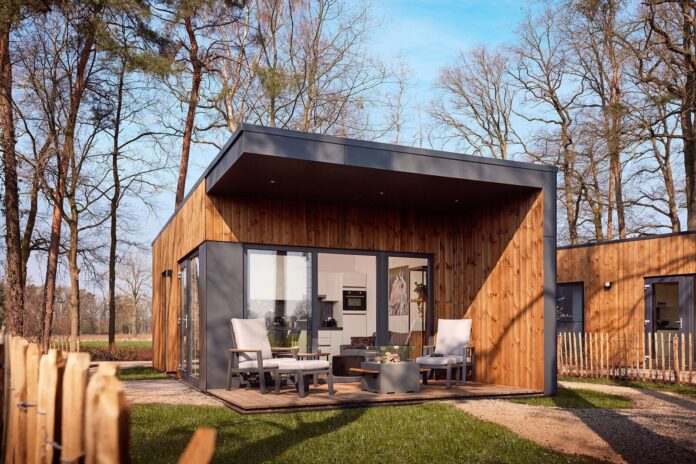
Minimizing Carbon Footprint
Tiny houses, which are increasingly available on the market as tiny homes for sale, are ideally suited for the integration of renewable energy sources, such as solar panels or wind turbines, due to their reduced energy needs. This compatibility with green energy significantly lowers greenhouse gas emissions associated with conventional electricity consumption. Residents of these tiny homes often harness natural resources for power, further reducing their carbon footprint and fostering a sustainable living environment that aligns with the goals of reducing global carbon emissions.
This lifestyle often includes a focus on sustainable transportation options. Many tiny house owners choose locations that allow for walking, cycling, or public transportation to reduce reliance on personal vehicles. Additionally, the portability of many tiny homes encourages a nomadic lifestyle that can be aligned with eco-friendly travel practices. By prioritizing sustainable mobility, residents contribute to a significant reduction in transportation-related emissions.
Promoting Economic Savings
Compared to regular residences, tiny houses are less expensive to create, purchase, and maintain. Beyond the price of the house itself, there are other savings to be had, such as lower utility bills, fewer property taxes, and less expensive maintenance. These savings can be put towards making sustainable lifestyle decisions, like buying organic food, making an investment in renewable energy, or patronizing regional craftspeople and environmentally conscious businesses.
With the money saved from living in it, residents often have the financial freedom to invest in eco-friendly technologies and sustainable practices. This might include installing solar panels, buying electric vehicles, or supporting renewable energy projects. By reallocating financial resources towards these green investments, individuals can further enhance their positive impact on the environment while continuing to promote economic savings.
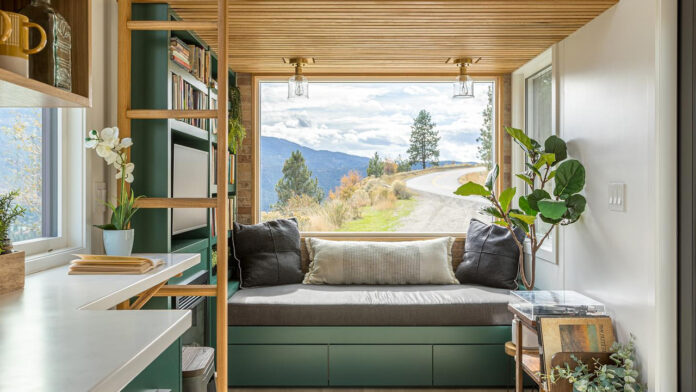
Reducing Ecological Footprints
By occupying less space and requiring fewer materials, tiny houses reduce the demand for natural resources such as timber, metal, and other construction materials. This conservation extends to everyday living, as residents typically consume less water, electricity, and heating fuel. As a result, the ecological footprint of each resident is significantly lower than that of traditional homeowners, aiding in the preservation of natural resources for future generations.
The minimalist lifestyle that accompanies them naturally leads to reduced waste production. With limited space, residents are more mindful of their purchases and waste generation, leading to less consumerism and fewer discarded items. This not only decreases the amount of waste sent to landfills but also reduces the demand for mass-produced goods, further diminishing the individual’s ecological footprint.
Enhancing Mental and Physical Well-being
A minimalist, decluttered lifestyle is promoted by tiny house living, and this can have a significant positive impact on mental health. When there is less physical clutter, there is less upkeep, cleaning, and debt, which clears the mind and lowers stress levels. This simplicity boosts general happiness and life satisfaction by allowing residents to concentrate more on their relationships, interests, and personal well-being.
Living in a tiny dwelling frequently encourages more outside time and physical activity. Residents are encouraged to explore their environment, participate in outdoor activities, and establish connections with nature because there is less space indoors. In addition to increasing physical health through exercise, living outside fosters mental health by fostering awareness and relaxation as well as a sense of connectedness to the natural world.
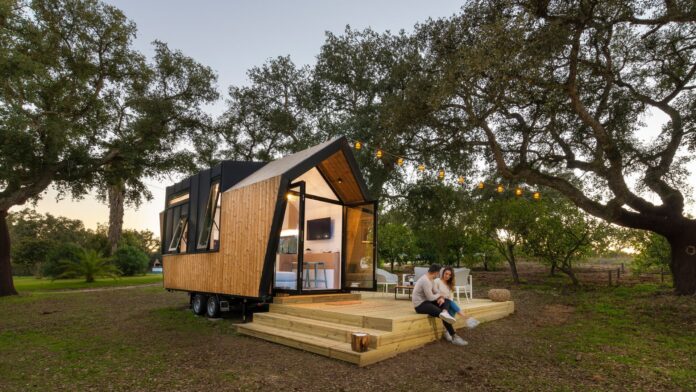
Conclusion
With its substantial reduction in resource consumption, improvement of land use and biodiversity, and promotion of community and lifestyle improvements in line with environmental sustainability, tiny house living presents a sustainable alternative to traditional dwelling.
Individuals can have a significant impact on the environment by embracing this lifestyle, proving that even little areas can have a significant impact on how we interact with the environment.
The small house movement is a manifestation of a burgeoning consciousness and dedication towards a more environmentally responsible and sustainable lifestyle, rather than just a fad.

